Manyberries Alberta railway station
In a few short years the Manyberries Alberta railway station will be a century old. Somehow this fine old building has managed to survive when most others across the province have not and today it’s being cared for by a couple who call it their home. It sits exactly where built and has been witness to the comings and goings of pioneers, settlers and travellers and of course, countless passing trains. Once a cornerstone of the community, it’s seen the town prosper and seen it in decline.
If you close your eyes it’s easy to imagine it a busy place, so many years ago. It reminds us just how important the train station and railways in general were to small towns across the prairies, a point now lost on today’s younger generation.
A vintage caboose and an old section house located on the property complete the scene.
The Canadian Pacific Railway came through Manyberries in late 1916 with the station being built later the following year. This section of track was known as the Stirling Subdivision and ran south from Lethbridge to its namesake town (a section still in use today) and then east on to Manyberries with a connecting line travelling further into Saskatchewan. This was primarily a grain gathering branch.
The rails were pulled up in the 1990s.
The station, known in rail buff circles as a CPR type #13, but officially as a type A2 Western, it was one of the most common depot designs used by the company. Almost two hundred were built, mostly across the prairies, in the years 1908-1918. It’s a combination passenger depot, freight house and has upstairs living quarters for the station agent and his family. That person sold tickets but was also a car broker, express agent, telegrapher and many, many other things.
It was these other tasks that accounts for the station’s longevity. Even after passenger service ended, the agent still needed a place to both work and live and so the building remained in use for a time, not closing until the early 1980s. It was not immediately abandoned however and the upstairs was rented out as a residence for a good number of years.
Unused since the early 1990s, the old station was discovered by a couple who wound up purchasing it and converting it to a bed and breakfast. The structure was in awful shape and I understand it took a much time and money to bring it up to habitable standards.
It continued to function as a B&B until recently when the owners retired due to health concerns. The current occupants, Cheryl and TJ and son, took possession of it earlier this year. They had tried to acquire it earlier, back in 2012, but that deal fell through.
In addition to the station, the property includes a second building, a section of track with a caboose and speeder, much of the old rail line and the former yard property to the east, and numerous pieces of train memorabilia.
A lot of work was done on the building in the last couple decades and and as such did not require much work for the new owners to move in. None the less, there is always something to do. Speaking with Cheryl, they have no immediate plans for the station, other then to keep it maintained….
”Our current plans are just to maintain the building and enjoy it as best we can. Keeping in mind the historic significance of it. We have no plans as of yet with all the land, but there is lots of time for us to plan and dream.”
A building like this is of course a natural curiosity (it sure caught my interest) and Cheryl has mentioned that many people drop by thinking it’s a museum or attraction. It’s not, it’s a home. That’s not to say that visitors are not welcome. If it’s a reasonable time of day and you ask nicely and show respect, they’ll be happy to show you around. Here’s what Cheryl has to say about this…
”We were well aware that the station and caboose are a major part of the community here and are excited when people come by to show interest in them. As long as visitors ring the bell and let us know they are here, they are welcome to have a look around. Not so much the inside the station, since it is our home, but around the property and in the caboose.”
She goes on to add…
”We have had quite a few people pop in, some just travelling by that thought we were a museum, some avid photographers, others who worked there years ago, a lot have known the owners who restored it into a B&B who have had their stories to tell as well. There have been a few that have the bold misconception that it is abandoned and they can go through personal property. Most of the encounters have been very pleasant…”
If they invite you for a tour, be sure to thank them for the opportunity. Remember, it’s their home and is private property.
Beside this station, there are a few more of this design still in existence in the province, one of them in Beiseker (used as town offices), one at Calgary’s Heritage Park and one is a museum in Castor. There may be others too.
Next to the station, on a short section of track, is a speeder car and caboose. The latter, CPR #436503, is just over a century old and prior to coming here in the early 2000s, was on display at Eston Saskatchewan. When it was retired by the CPR is not known but it could have easily lasted in service well into the 1970s or even the 1980s, when cabooses were for the most part finally phased out. That long? It’s certainty possible since the obsessively frugal CPR held onto to things for a long, long time.
Railway workers would often refer to their caboose as a hack, crummy or waycar. Here in Canada you might also hear them called “vans”. As you can see in the photos the car, which was both a work place and home on wheels for the tail end crew, was hardly a palace. The accommodations were very, very basic and clearly not that comfortable. One comment I hear from old timers is that the caboose was always too hot or too cold. Never was it just right.
There is a nice mid-1950s Chevrolet pickup on the property. I forgot to ask Cheryl and TJ about it, but perhaps I can convince them to comment here.
Next door to the station is what’s called a section house. It was home for the “section man” and his family, and his job was to patrol and maintain a specific stretch (or section) of track. He’d ride his speeder up and down the line inspecting it and doing any minor repairs and maintenance. Tightening rail bolts was one common task. The use of section men was phased out a long time ago.
It’s not clear when this building was constructed (research continues BTW), but around the same time of the station is a likely guess. When it was last used by the railway is not known either, but I understand that once the section man’s job ended (most of these positions were phased out in the 1950s/60s), it found use as a dormitory, a place for railway crews to overnight if needed.
Once no longer needed by the CPR, the section house was not demolished as one would expect, but rather rented out as accommodation. This is what accounts for its survival. It’s still being used in that capacity to this day.
The old railway yard, locomotive servicing and turning facilities and grain elevator were all located on a chunk of land just east of the station. On Google Earth, you can get a good idea where each was. We did not have much time to explore there, but hope to return.
Manyberries was founded with the coming of the railway although I understand a limited number of have lived in the area for some years prior. It’s in the proverbial middle of nowhere, at a remote crossroads in one of the drier regions of Alberta, and today it’s home to a handful of people. At the peak there might have been two handful’s worth! The area has never been heavily populated.
On this visit we stopped by the only open business in town, the Southern Ranchman’s Inn, for a bite and a beer. What an incredible place. It’s like stepping back in time and I just loved it! You can get a room to and that’s my to-do list. Not many of these old hotels remain in business.
Thanks to Cheryl and TJ Stromsmoe who allowed us free run of the station and its surroundings. A big shout out to Jason and Rebecca Sailer too, the couple who orchestrated the meeting between us all. In addition to getting us access here, they took us on amazing abandoned and old things tour of southeastern Alberta and for that we are forever grateful. We had a blast! Watch for more articles from this collaboration coming soon.
To see other train depots we’ve documented, follow any of these links…
Moose Jaw then and now – CPR train station.
CPR Bassano station.
Princeton BC train station and rail yard.
This here post…
Beachwood Estates.
If you wish more information on what you’ve seen here, by all means contact us!
Date of adventure: August, 2014.
Location: Manyberries, AB.
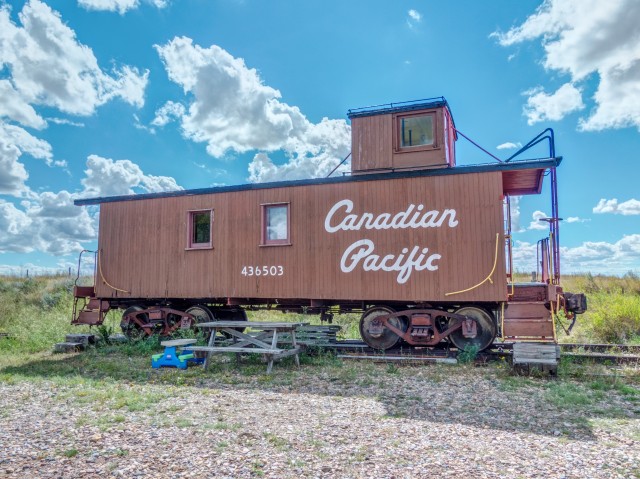
An old CPR “van” on the property.
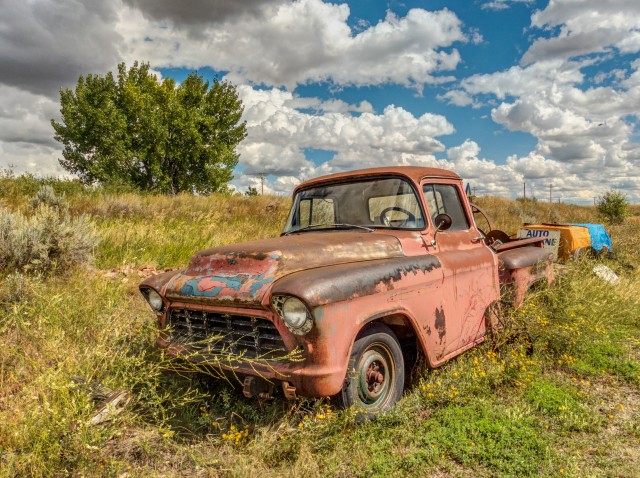
A mid-1950s Chevrolet truck.
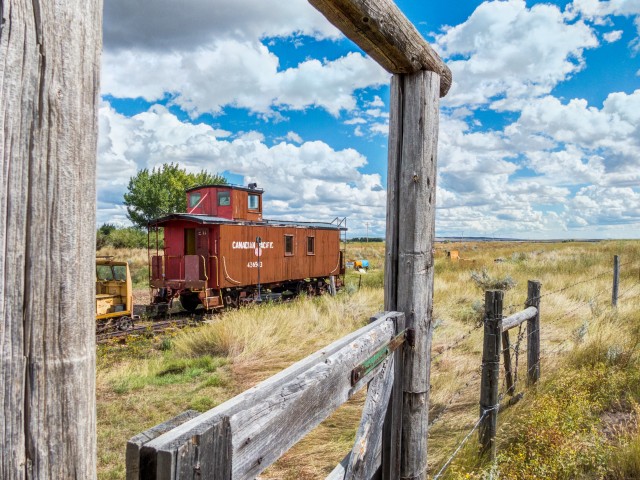
The short section of track under the caboose was built atop the original roadbed.
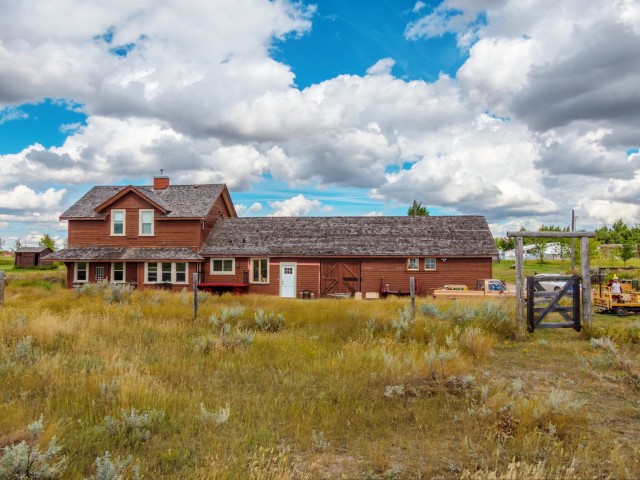
The Manyberries Alberta train station, built in 1917.
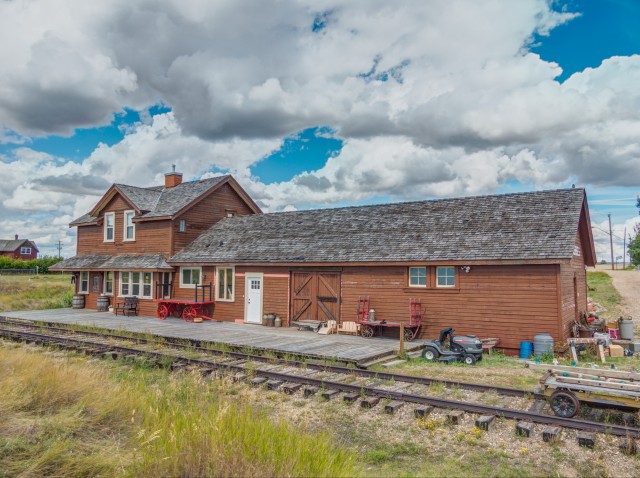
Today it’s a residence.
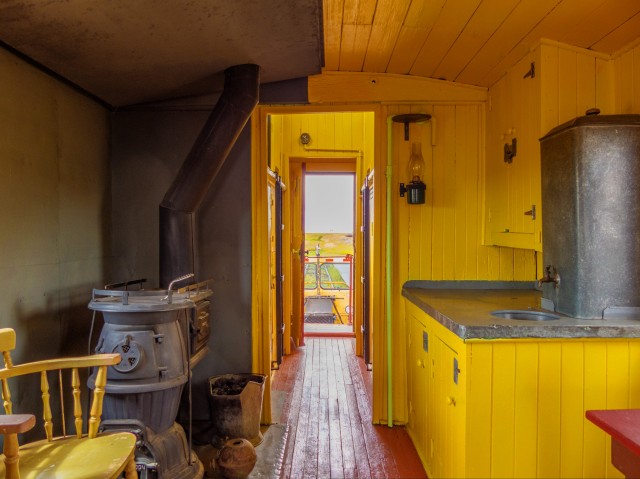
In the caboose – a coal stove to keep warm, an open door to keep cool.
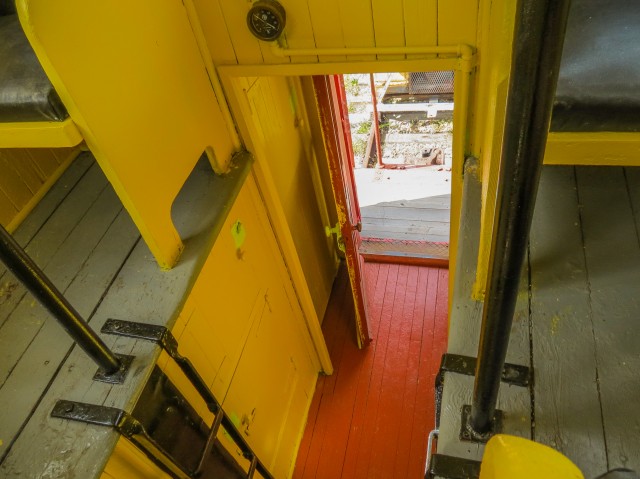
From the crew position.
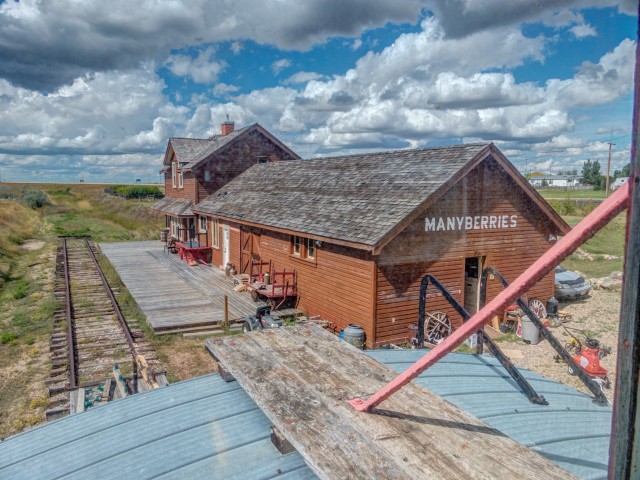
The view from the cupola.
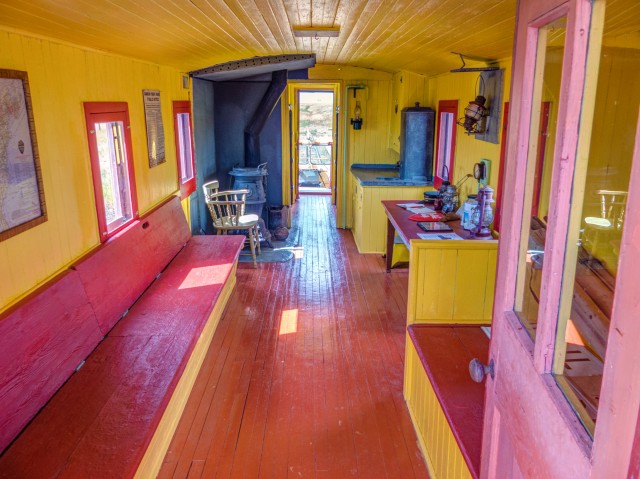
Caboose accommodations were very basic.
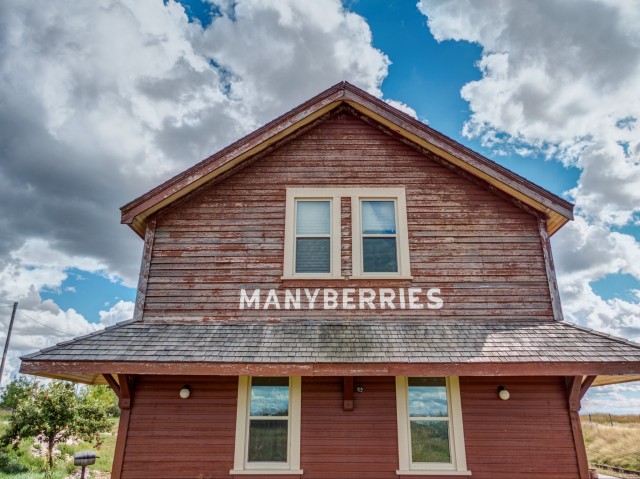
The upper floor provided accommodation for the station agent and his family.
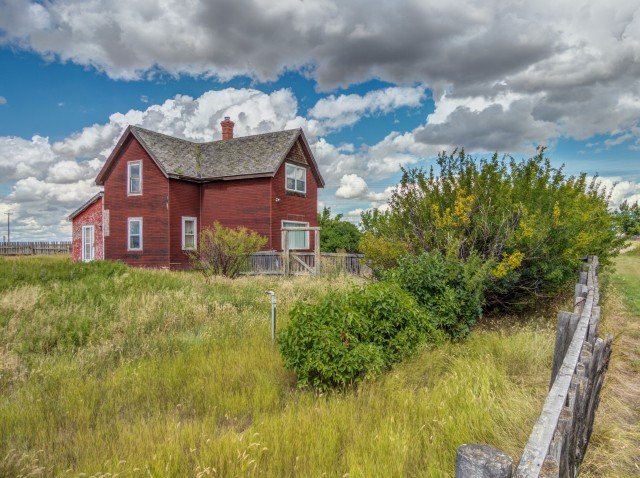
The nearby section house.
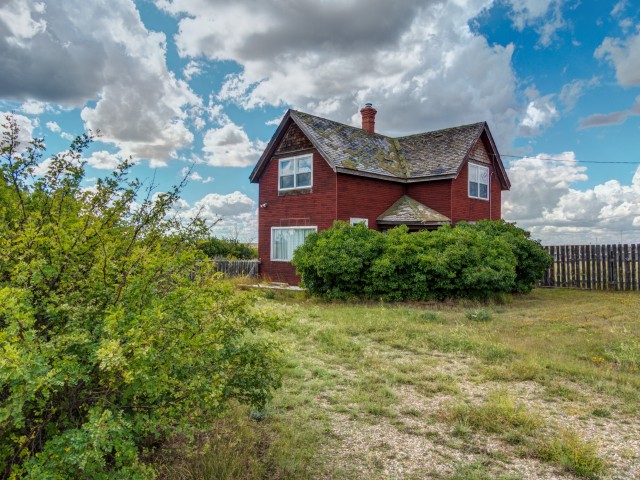
The person who lived here, the section man, maintained track in the area.
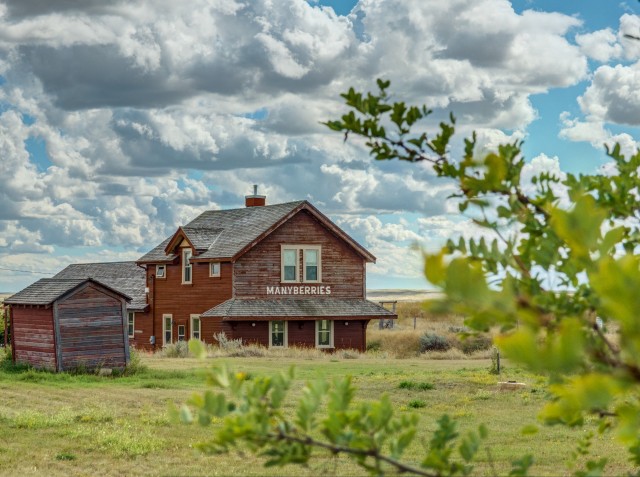
It is one of a handful of stations that’s still standing where built.
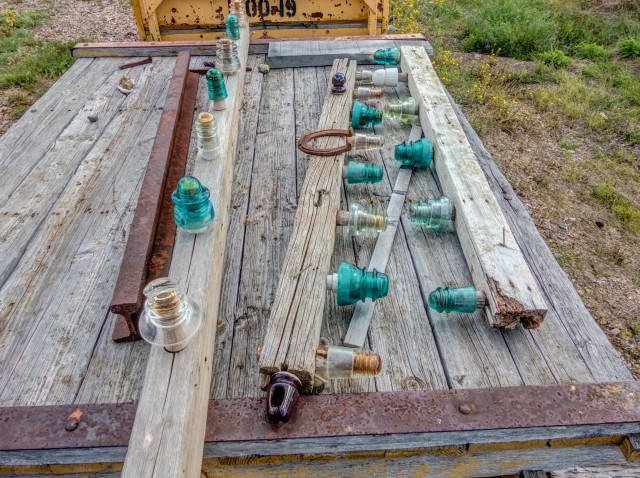
Bits from the old telegraph line.
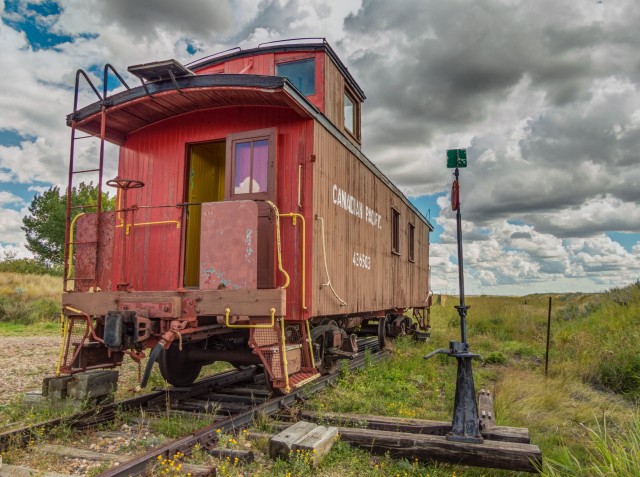
Prior to coming here the caboose was on display in a small Saskatchewan town.
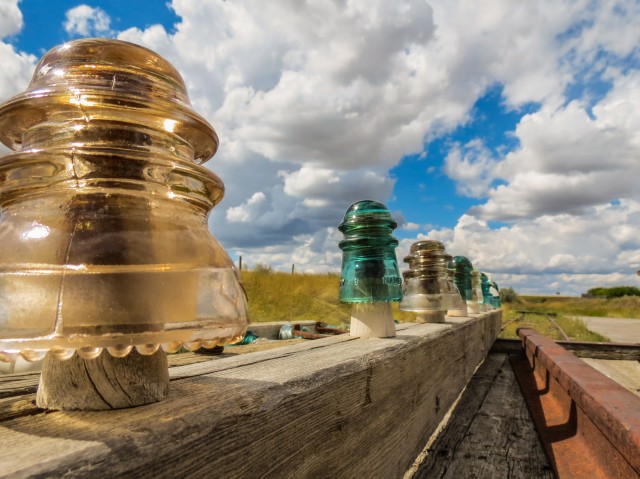
What a simply beautiful day!
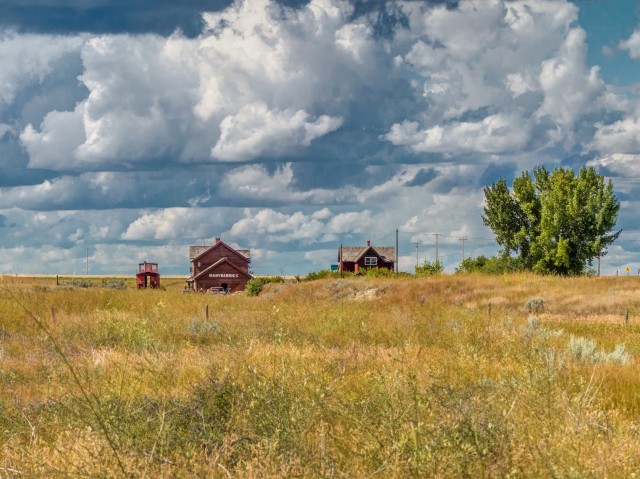
We’re standing roughly where the town’s grain elevators were located.

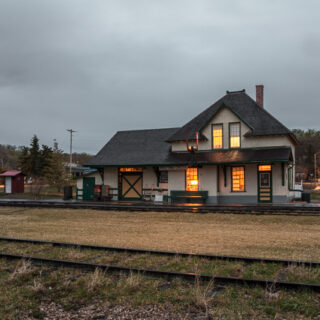
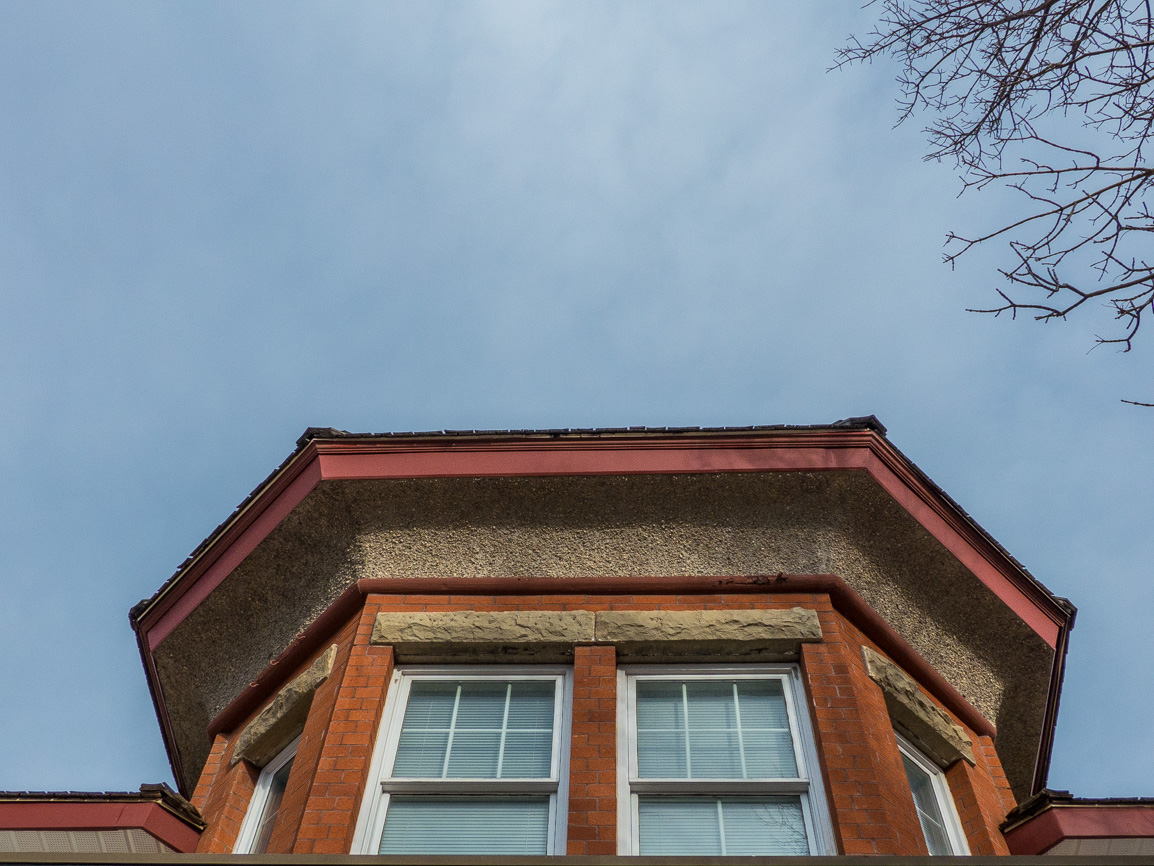
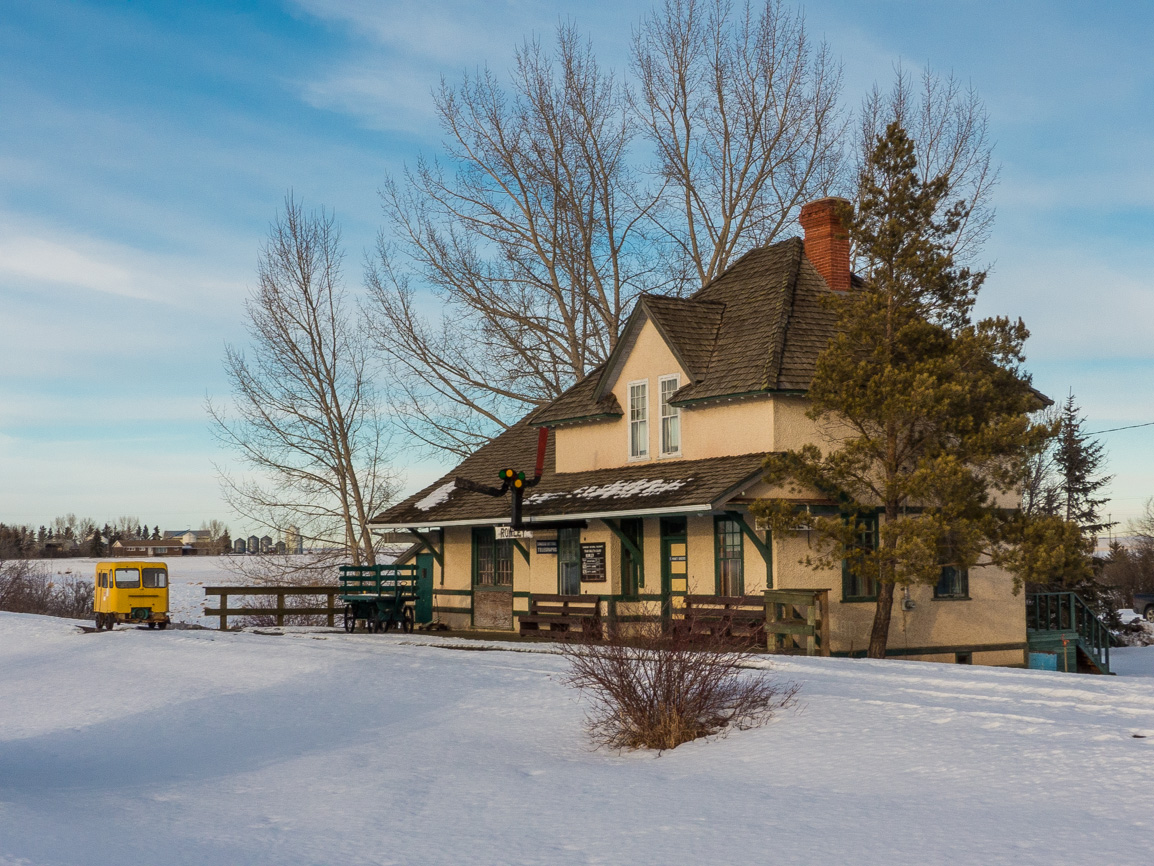
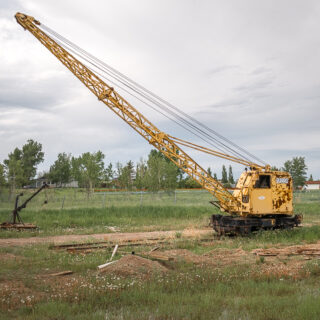
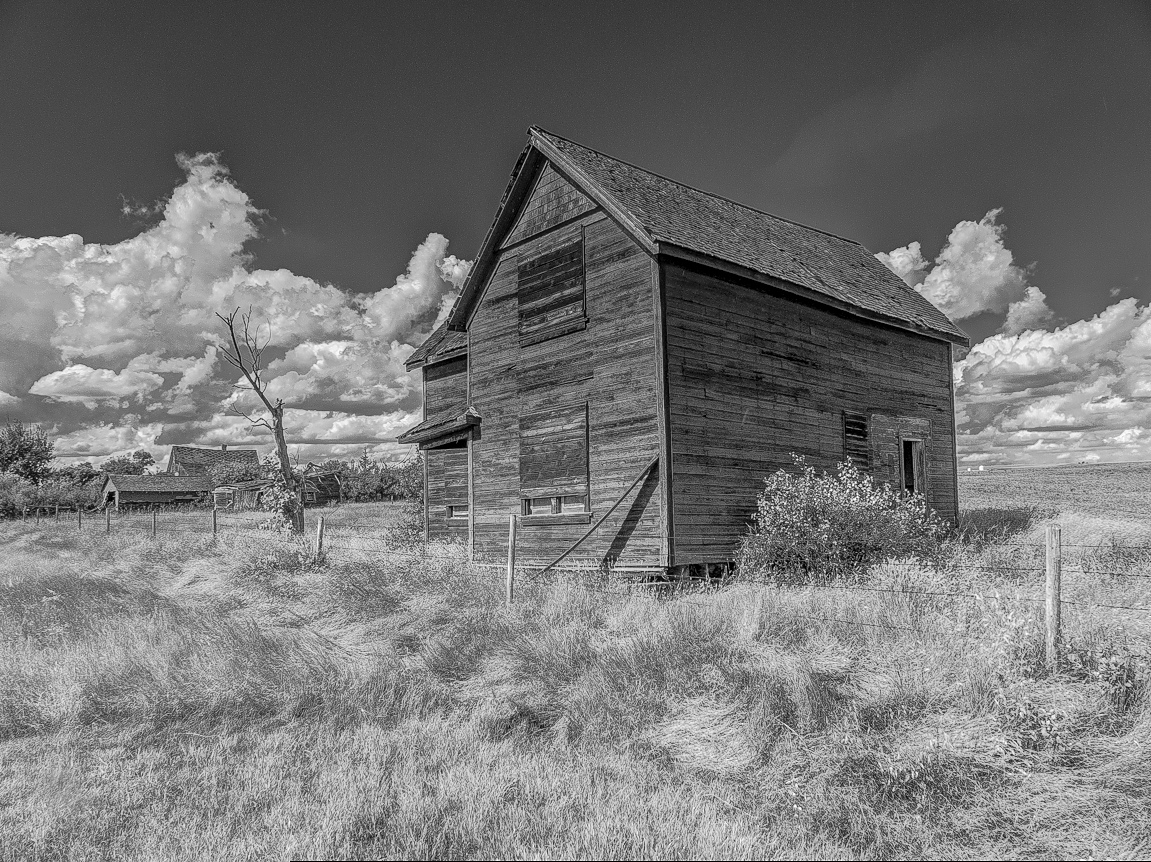
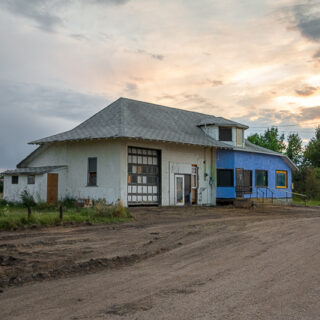
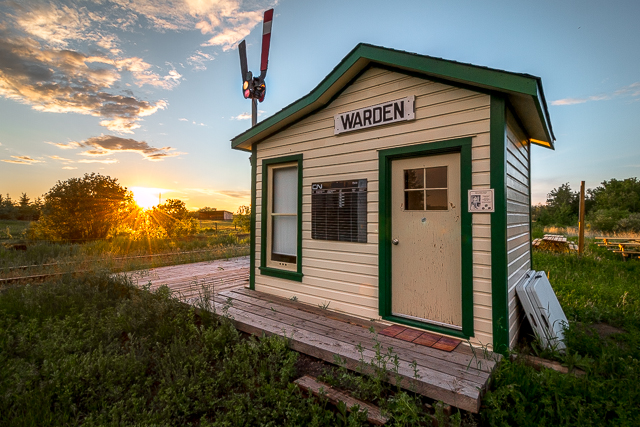
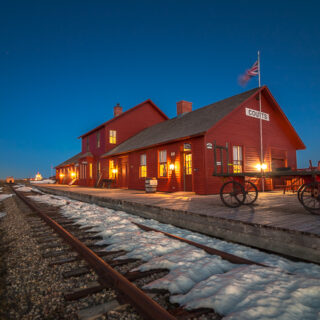
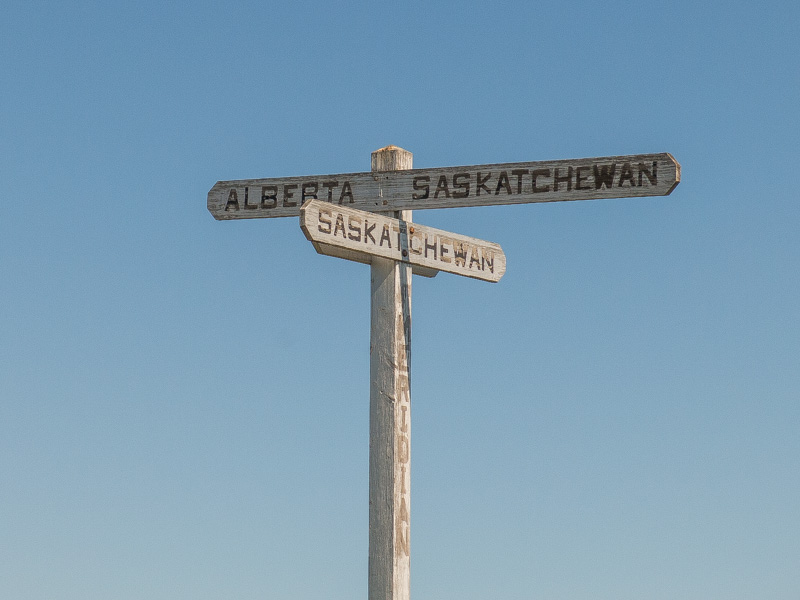
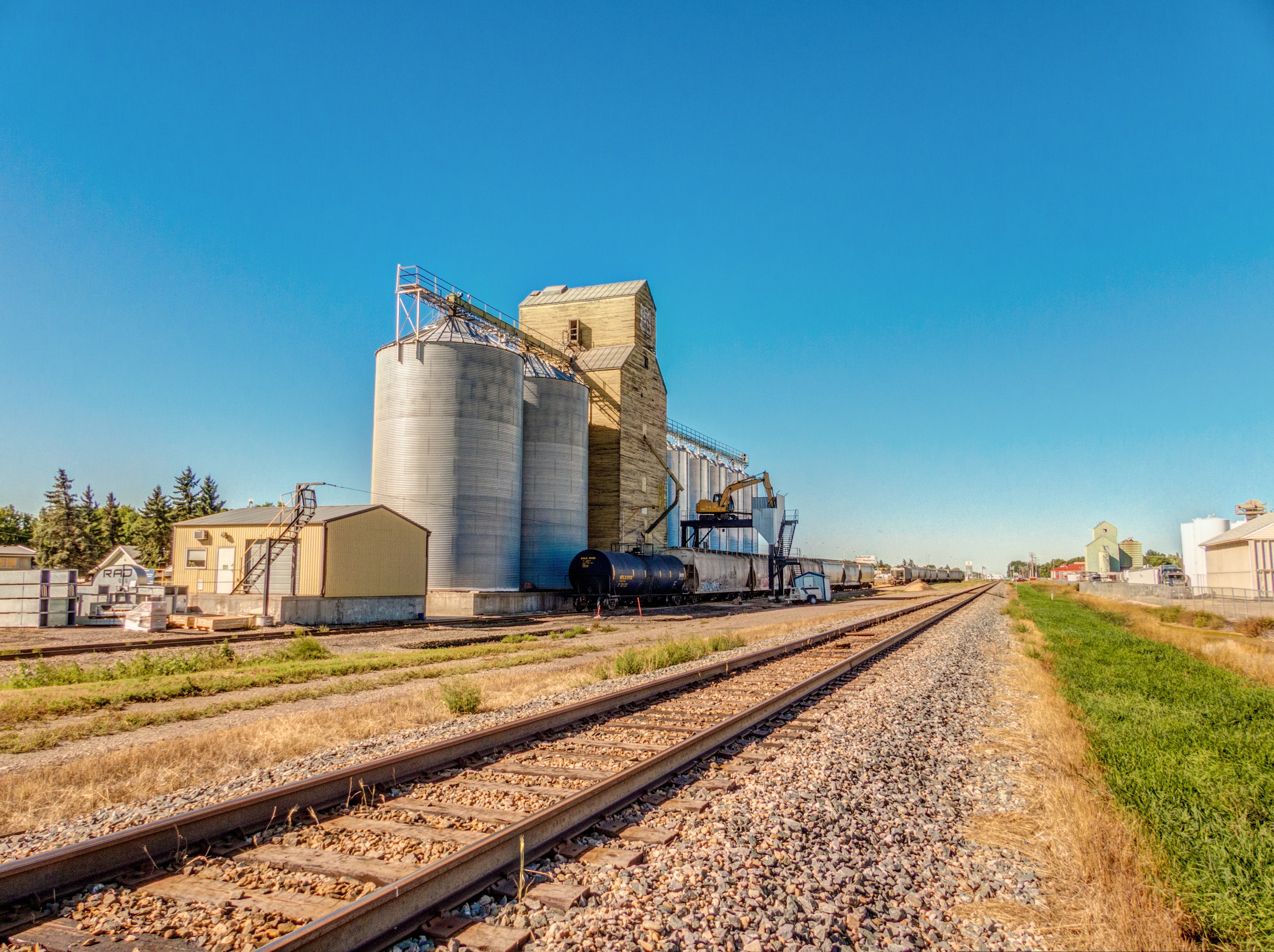
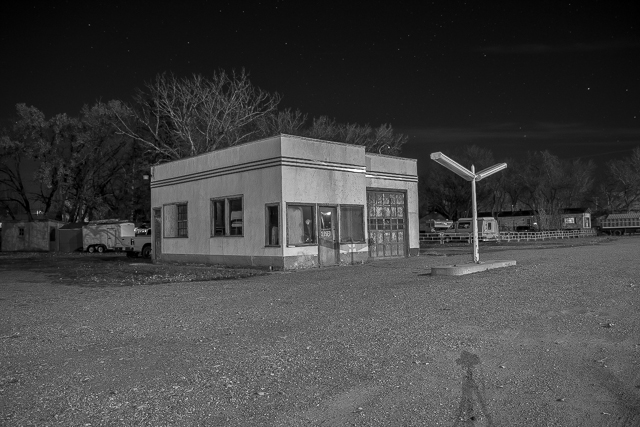
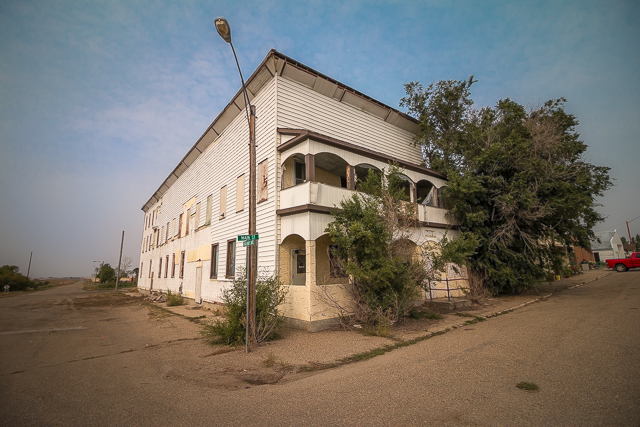







My Grandfathers family is from Manyberries. I sure would love to know more about this side of my family. My Grandfather’s name was Douglas Bennett. If anyone could help me learn more I really would appreciate it.
Back online after being away. Here’s hoping someone sees your comment and can help. Best of luck.
Hi George. Your Grandfather is mentioned in the Manyberries Chinook History Book under the Section if “Early Residents in Orion”
Douglas Bennett
Doug was raised in the Glassford District. He joined the army in 1940 and went overseas as a tank driver in the South Alberta Regiment. After being wounded in action he was returned to Canada and spent a year in hospitals.
After his discharge from the army he bought the original Hewitt & Black building from Hedwig Yeo in Orion. He only stayed there for a short time as his intentions to set up a business fell through He sold the building to another party who tore it down for salvage lumber.
Doug then moved on, working different jobs. He had a Rawleigh route in Central Alberta, then went to Piapot, SK where he worked in a hotel. It was there he met met his wife, Kay Beasley, they married in 1947. They then moved to Redcliff, where he worked in the Redcliff Legion. Then he got a job in Ralston. His 3 children Harry, Florence and Jack were all born in Redcliff.
Doug passed away in 1954 at the age of 34.
I hope that helps.
Thanks you and here’s hoping that person sees your comment.
I love your site!
That’s so awesome!
Yup, the rail companies blamed the elevator companies and visa versa for the demise of these small towns. In my mind it was the grain companies. They decided to force grain farmers into trucking to inland terminals, sometimes 50 plus miles away. So with the closure of the small town elevators, up came the rail tracks. Small farmers sold out to the big boys and moved to a bigger community. Soon there were no customers for the businesses and no kids for the schools. I loved growing up in a small town but it seems this generation doesn’t share the interest. I guess with no stores, no service stations, no banks, no elevators….no jobs, who can blame them. A wonderful time in our history that will soon be totally gone.
It was a nasty cycle. With the elevators so went the towns. Soon the stores closed, then the hotel, before finally there was not a single business. Once the decline started, it was near impossible to stop.
I lived in Manyberries in 1965 as a young teacher. Wandered all around the town. Too young for the bar, but was allowed in the pool room.
Loved the place and the people, the prairies and the views of the Sweet Grass Hills.
One of my students lived in the station.
I drove through there last fall. The school is closed now and the kids are bussed many miles. Sad.
I have great memories of that school and the little town.
There’s pretty much nothing left in town now. Those are awesome memories shared of a town that today is seemingly dying.
Thank you for this great post! Interesting information and awesome photos (the cloud formations in the blue sky very much adds to the scenery). Passed through Manyberries back May, 1977. Pleased to know there people willing to put forth this effort and expense to preserve buildings that were part of the railway.
Glad you like the write up and images. We’ve been planning a revisit of the station but the schedule has yet to allow it. Love that building and yes, kudos to the owners for taking care of it.
Fantastic!
We’ve got a standing invite to return to the station. One day…we’re working on it.
Great photos, my grandfather and grandmother were original Manyberries settlers, my grandmother’s father, Archie Marchesseault, founded the first general store there in 1909. They lived there until 1964, I had the chance to visit several times as a kid. Their house still stands, a block or 2 north and west of the Station, in behind the hotel. In 2005 I was able to tour the Station when Carl and Joyce Goddard were restoring it, they did a tremendous job.
Glad you liked the pics! We’ve a standing invitation to go back to the station, which we hope to do sooner than later. More pics! Cool connection to Mannyberries. Yes, thanks to their hard work the building is still standing. It was an awful mess before. Thanks for commenting!
Great photos ! Nice to know that station is still standing as is the section house and still in good condition. Also the caboose. I was there on a road trip in 1977 on a nice, sunny day and snapped a photo. The station was still in use as the line ran all the way from Shaunavon to Stirling where it connected to the Coutts Sub South of Lethbridge. Was told by a CP conductor that was quite a busy line when he work it back in the 60s.
Glad you like them – it’s such a photogenic subject. It’s amazing to hear how busy these branch lines were back when. I’ve seen photos from along the Manyberries Line in the 1960s showing grain trains forty or fifty cars in length (just a rough guess – they did stretch off to the horizon, however) travelling it. Back then, during the fall grain rush, they operated daily I’m told.
That was an interesting trip! Grain elevators still present/in use back then in the nearby villages. It was quite the drive on the grvel roads to get from the Cypress Hills to Manyberries.
Another wonderful history. Thanks for what you do Chris & Connie.
I’m reading about one of your pieces a day. How long will it take me catch up?
Cheers and seeya sometime soon,
Byron
Thanks! Love that station. Let’s see, there’s about 1060 posts right now. Taking away the Boler ones and short subjects, this leaves some seven hundred or so good long write ups that are well worth reading. So a couple years. Wow, it just hit me…that’s a lot of writing! Don’t worry, we’ll get out together soon. February was a write off, in so many ways, but March is looking awesome. Looking forward to the fun.
What a fun vintage place to visit if you are looking for a historical refuge. I love the small caboose and train car and would love to take my kids there when we visit some summer. Thank you for sharing such a jewel of a location for a fun family get-a-way.
Awesome! Remember to ask permission from the owner before exploring the property.
My siblings and I used to catch the train from Govenlock,Sk.south of Manyberries to Manyberries in the summer to spend time with our cousins who lived there.That was probably in the earl 60’s.I can remember the train ride like it was yesterday.Need to drive there again. Good memories.
Wonderful memories!
(via Facebook)
Missing all the good times had in this little town with the greatest people ever.
Fond memories, is there nothing better?
(via Facebook)
My mothers family called this town home for years.
Wow, we’re hearing from so many people connected to the town!
Wish I could have something like this.
Don’t we all!
(via Facebook)
Left there in 1945. We lived in the station. Quite a few memories.
I’d LOVE to speak with you sometime. I know Cheryl would as well. I’ll drop you a line.
My Dad was the R.C.M.P member in Manyberries in the early 1950’s.
Given the area’s always modest population we’ve sure heard from a good number of people who lived there or were somehow connected to the town. So cool. And thanks so much for commenting!
Very nice post ! This truly looks “Off the Beaten Path” !!
The area sees few visitors for sure.
I lived in that station for three years when my Dad was the CPR Agent in Manyberries. We left there in 1945 to move to Foremost where we lived in the station until I left to come to Calgary and then Edmonton. Dad passed away in Foremost in 1960. I have so many stories of life in the railroad stations
Oh my goodness! If you don’t know Cheryl, the person who lives there now, you should. I bet she’d love to speak with you. If you don’t mind, I’ll pass your email along to her.
I would love to convert the caboose, tiny house living.
I was thinking the same thing. I’d love to live in a caboose.
My dad worked out of Manyberries for the CPR in the 50s.
Oh, that’s so cool. So I bet he knew the station well.
What color did the CPR paint their Buildings?
Generally the same shade used on the station seen, commonly called “Mineral Brown” or “CPR Mineral Brown. It reality is could be anywhere from dark brown to an almost red-ish shade and anywhere in between depending on who mixed it, the age of the paint, weathering and so on.
Hi All: While researching the place in Canada with the most hours of sunshine the name Manyberries came up as the #1 spot. So knowing it is not far from Lethbrdige, we are driving out your way out tomorrow Dec 1,2015 to look the area over.
My wife Geri and I are recent arrivals to Lethbridge. We relocated to the south of the province, from Canmore where I retired in 2006, to be closer to our precious little grandkids in Boise Idaho. Being a history buff, and a columnist/writer of automotive peculiarities (Old Autos Newspaper) I thought this day trip would be fun. While researching Manyberries I came across this blog, so very interesting. If we see someone milling around we’ll stop and say high. So nice to see this history saved.
My hometown is High Prairie, Alberta. I grew up in the shadow of a station exactly like this one, and my dad was a section worker for many years in the Slave Lake area – Mitsue to be exact. You brought back many memories. Thank You one and all.
Alvin & Geri Shier.
Yes, I’ve heard that mentioned about Manyberries. I love old cars and will track down some of your work. If Cheryl is about, I’m sure she’d be happy to show the station.
Chris & Connie, Thoroughly enjoy your posts about historical treasures around Alberta. Here’s a question, there was a CPR station on blocks near Gleichen AB for years next to the #1 HWY, then disappeared. Later saw it in Cochrane AB in sight of the 1A, then again disappeared. Any idea where it went? Restored or destroyed? BTW is is a shame regarding the Bassano station, if the lottery gods ever bless me I’ll step up to the plate and restore it, if not too late.
Regards, Dave.
I’ve spoken with a few people and my understanding is the station you’re speaking of was moved to an acreage north of Cochrane. I have yet to confirm that in person however but it is on my to-do list. The Bassano Station story is so sad. It’s finally been closed, but there is a still a huge amount of work that needs to be done. Thanks for commenting Dave.
Awesome photos! You’re such a great resource for history buffs such as myself.
Thank, we are glad you dropped by.
You are SOO good…
We’re touched.
so jealous of what you do.
We hear that a lot…
The framed caboose pic is now my wallpaper, thanks mate!
Glad you like it!
Thought that place was for sale and the caboose was suppose to be moved?
Was for sale and was bought by the nice couple who allowed us access. They said nothing about the caboose going anywhere.
Great blog post Chris!
Thanks, we are so happy we could share it with everyone.
Hi Chris & Connie! Thanks for coming out this way! We enjoyed the visit! Love this write up! You’re more than welcome to come back out any time. The truck is a ’55 Chevy Shortbox. It’s another ‘dream’ yet to be brought to back to life. lol
Thanks so much Cheryl, we so much fun visiting your place and writing about it.